Wilson’s: Legacy
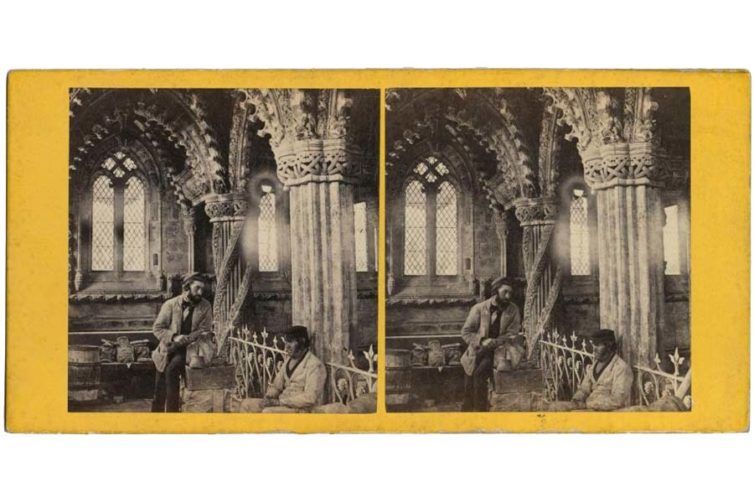
Share this step
After his partnership with fellow photographer John Hay ended in 1855, George Washington Wilson continued with his portraiture business, photographing thousands of Aberdeen’s citizens as his studio became the most prominent in the city.
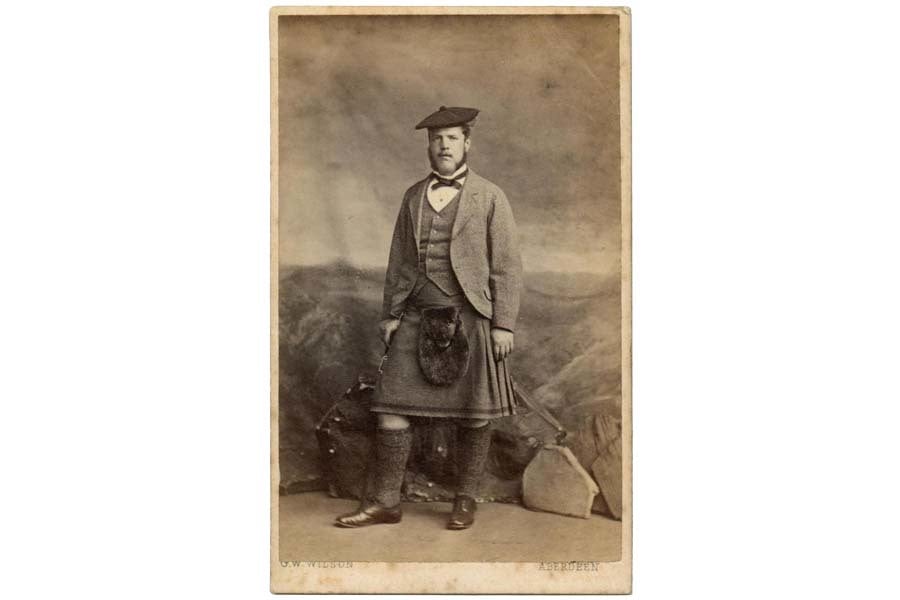 Carte-de-visite depicting a gentleman wearing a kilt, by George Washington Wilson, Aberdeen, IL.2003.44.4.2074 © Howarth-Loomes Collection at National Museums Scotland
Carte-de-visite depicting a gentleman wearing a kilt, by George Washington Wilson, Aberdeen, IL.2003.44.4.2074 © Howarth-Loomes Collection at National Museums Scotland
The most popular form of 19th century photography was undoubtedly the carte-de-visite, a size of photograph based on the traditional visiting card, and relatively inexpensive. With ‘cartomania’ continuing until the mid 1860s and carte-de-visites being made in the millions across the globe, this provided Wilson with a lucrative income.
Notably in 1857 he produced a group portrait (below) which involved the first known use of photo montage or collage, although apparently only the esteemed men of Aberdeen were deemed suitable for these composite groups of miniature portraits.
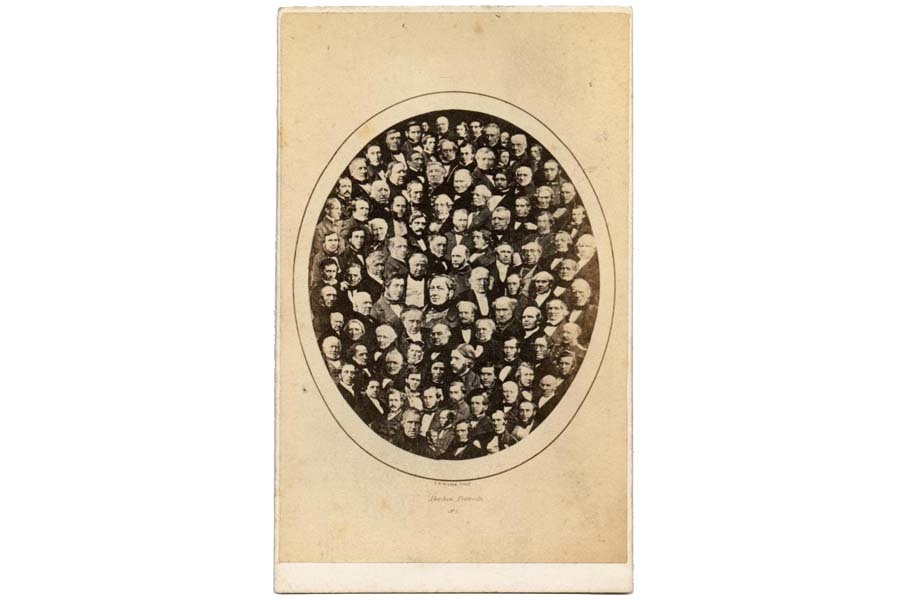 Carte-de-visite of possibly the first known photomontage depicting one hundred and one individuals, by George Washington Wilson, Aberdeen IL.2003.44.4.377 © Howarth-Loomes Collection at National Museums Scotland
Carte-de-visite of possibly the first known photomontage depicting one hundred and one individuals, by George Washington Wilson, Aberdeen IL.2003.44.4.377 © Howarth-Loomes Collection at National Museums Scotland
Wilson achieved this novel effect by cutting and pasting small portraits into an oval shape and then re-photographing the collage. This was then placed in the window of his friend George Walker’s bookshop in Aberdeen and soon captured the attention of the general public.
Wilson continued exploring the possibilities of photography as he ventured into landscape stereos, first testing the market in the Aberdeen area before expanding his horizons throughout Scotland and then across the rest of Britain.
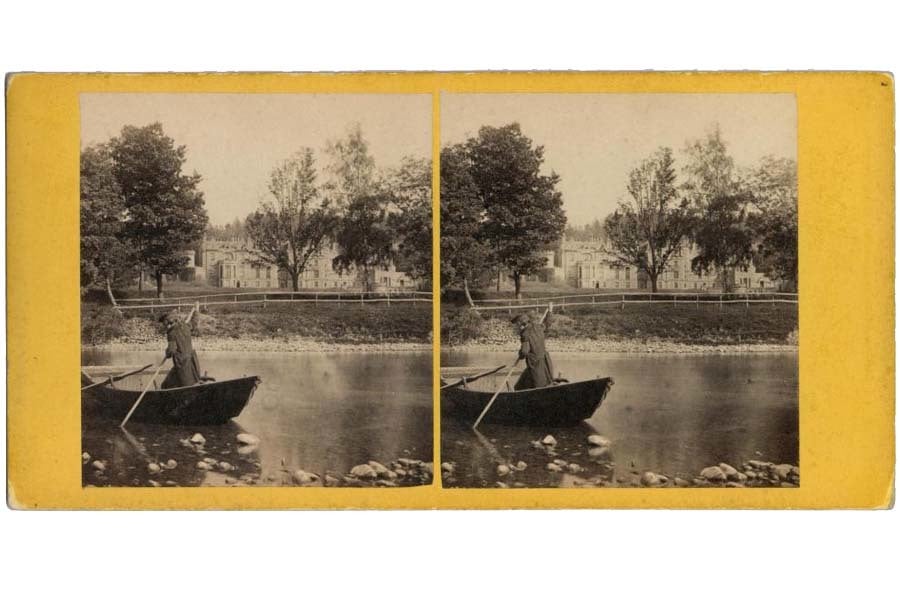 Stereocard depicting Abbotsford House, from the Tweed, by George Washington Wilson & Co., Aberdeen, IL.2003.44.6.1.106 © Howarth-Loomes Collection at National Museums Scotland
Stereocard depicting Abbotsford House, from the Tweed, by George Washington Wilson & Co., Aberdeen, IL.2003.44.6.1.106 © Howarth-Loomes Collection at National Museums Scotland
His first catalogue held forty-four views of Scotland which represented the castles and romantic views that appealed to the burgeoning tourist trade, buoyed by the development of the railways and influenced by Queen Victoria’s much publicised explorations north of the border.
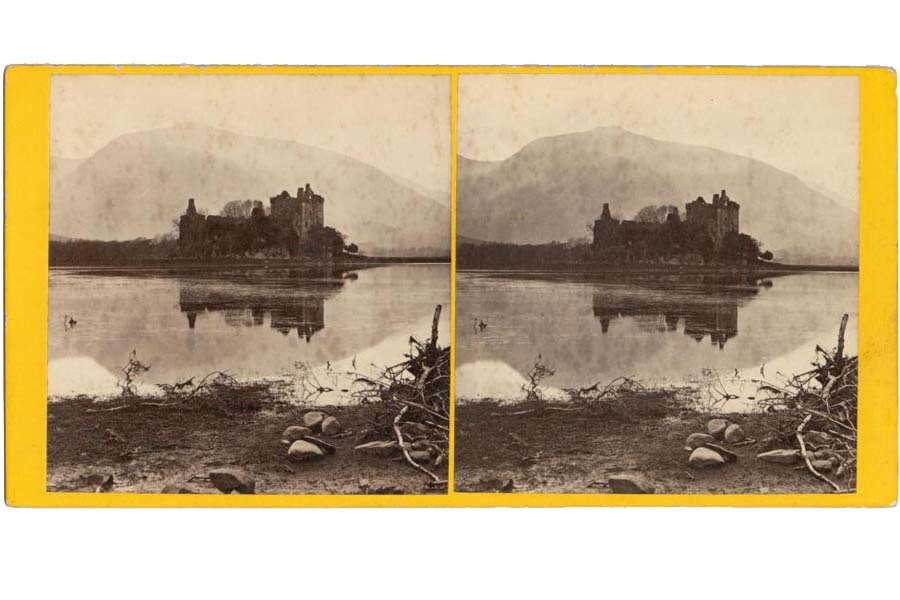 Stereocard depicting Kilchurn Castle, Loch Awe, by George Washington Wilson & Co., Aberdeen, IL.2003.44.6.1.494 © Howarth-Loomes Collection at National Museums Scotland
Stereocard depicting Kilchurn Castle, Loch Awe, by George Washington Wilson & Co., Aberdeen, IL.2003.44.6.1.494 © Howarth-Loomes Collection at National Museums Scotland
A significant technical challenge that Wilson overcame was the photographing of detailed skies, an important element within emerging landscape photography.
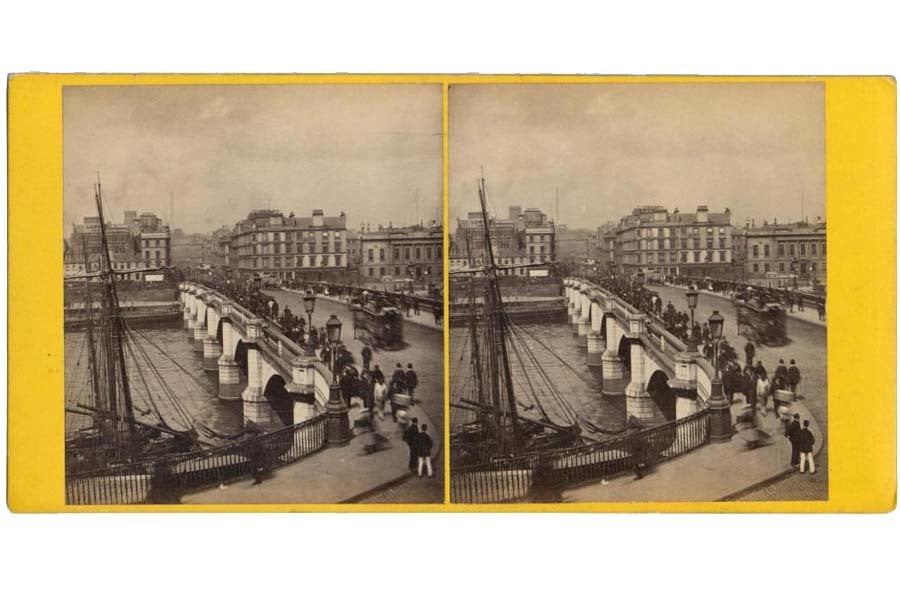 Stereocard depicting Glasgow Bridge, by George Washington Wilson & Co., Aberdeen, IL.2003.44.6.1.61 © Howarth-Loomes Collection at National Museums Scotland
Stereocard depicting Glasgow Bridge, by George Washington Wilson & Co., Aberdeen, IL.2003.44.6.1.61 © Howarth-Loomes Collection at National Museums Scotland
Experimenting with the chemistry involved in the wet collodion process, Wilson wrote, “When my subject is well lighted, I prefer pyro-gallis acid as a developer, but when there is a great contrast in the picture, and an undue portion of deep shadow, then iron is much to be preferred.”
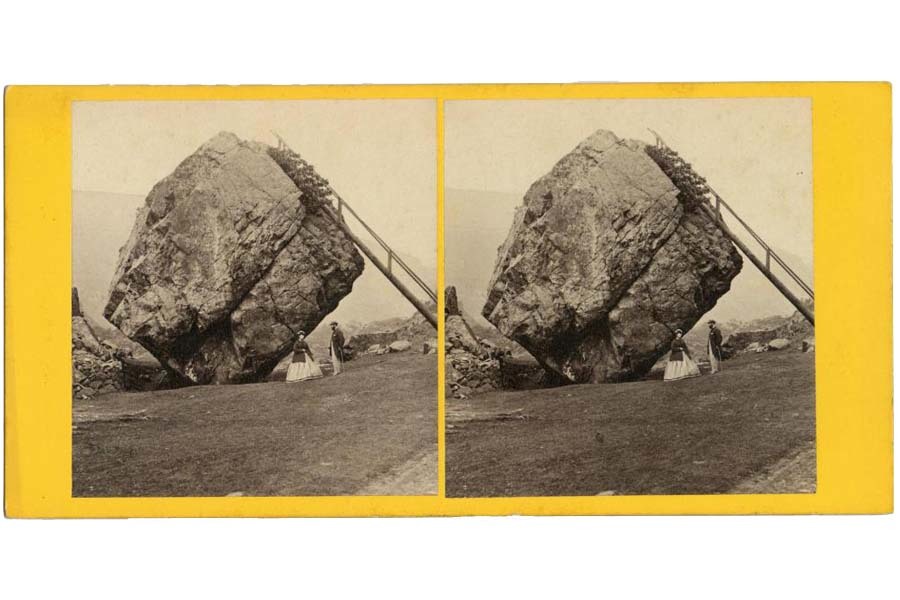 Stereocard depicting the Bowder Stone, Borrowdale, by George Washington Wilson & Co., Aberdeen, IL.2003.44.6.1.326 © Howarth-Loomes Collection at National Museums Scotland
Stereocard depicting the Bowder Stone, Borrowdale, by George Washington Wilson & Co., Aberdeen, IL.2003.44.6.1.326 © Howarth-Loomes Collection at National Museums ScotlandThis systematic cataloguing of the country’s most significant geography and tourist destinations allowed him to build a store of negatives described by J. Wood in an 1871 edition of the British Journal of Photography as “for number and excellence, I believe, will not soon, if ever be surpassed… (Wilson) left off numbering the proofs he had taken from them and sent out – at the time amounting millions – which are now profusely scattered over the habitable globe.”
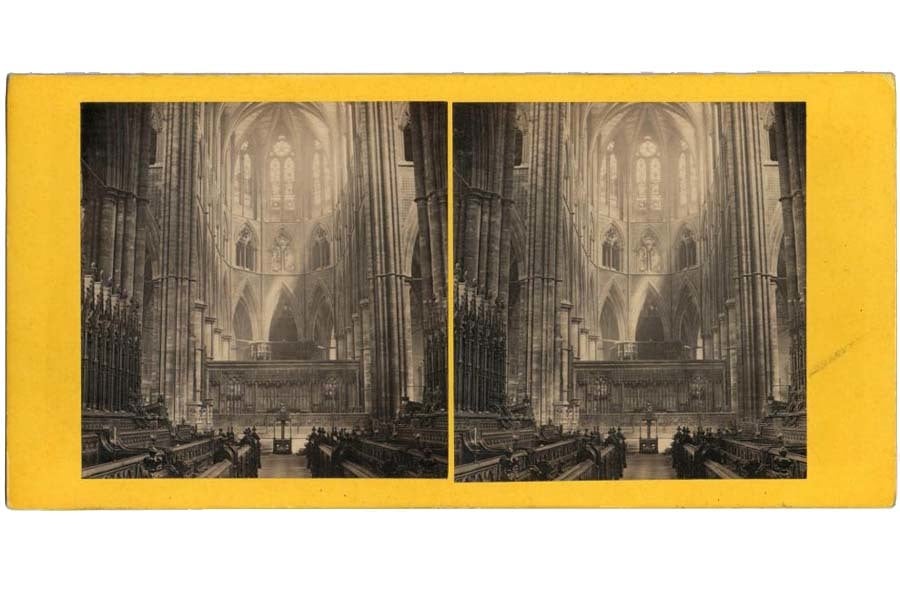 Stereocard depicting Westminster Abbey, by George Washington Wilson & Co., Aberdeen, IL.2003.44.6.1.248 © Howarth-Loomes Collection at National Museums Scotland
Stereocard depicting Westminster Abbey, by George Washington Wilson & Co., Aberdeen, IL.2003.44.6.1.248 © Howarth-Loomes Collection at National Museums Scotland‘we know of some who did not disdain to follow Mr Wilson’s footsteps in such a literal fashion as, having one of his views in hand, and observing the relation of one portion of scenery to the other, to eventually by this means discover the identical spot where his camera had been planted, and there also plant their own tripods’
George Washington Wilson & Company’s original glass plate negatives and prints are now held at Aberdeen University’s Special Libraries and Archives.
Further reading:
‘George Washington Wilson: Artist & Photographer (1823-93)’, by Roger Taylor, published Aberdeen University Press, 1981.
‘By Royal Appointment: Aberdeen’s Pioneer Photographer. George Washington Wilson, 1823-1893. Papers from a conference organised by the University of Aberdeen to celebrate the life and work of Scotland’s pioneer photographer’ published by the Centre for Scottish Studies, University of Aberdeen, 1997.
Share this
Stereoscopy: An Introduction to Victorian Stereo Photography

Stereoscopy: An Introduction to Victorian Stereo Photography


Reach your personal and professional goals
Unlock access to hundreds of expert online courses and degrees from top universities and educators to gain accredited qualifications and professional CV-building certificates.
Join over 18 million learners to launch, switch or build upon your career, all at your own pace, across a wide range of topic areas.
Register to receive updates
-
Create an account to receive our newsletter, course recommendations and promotions.
Register for free







